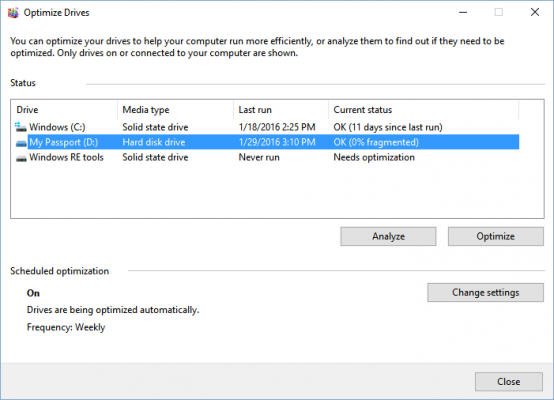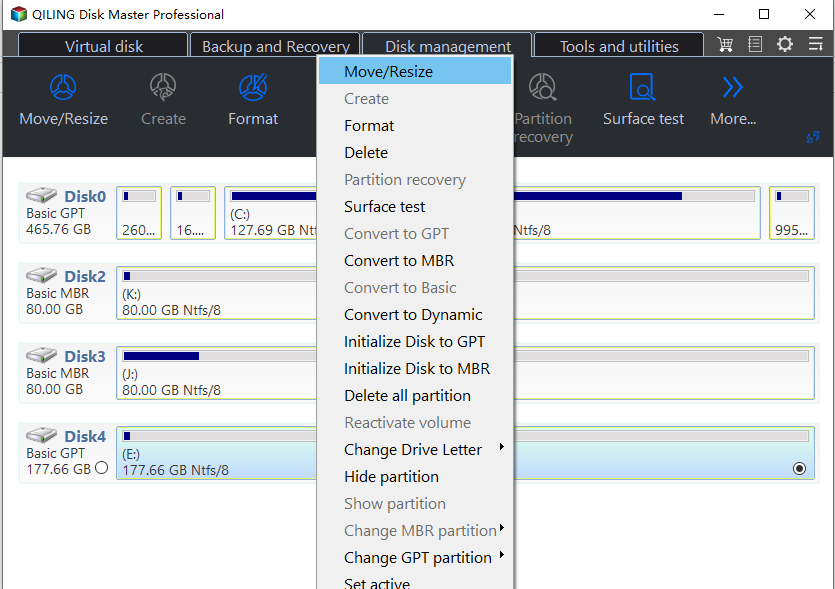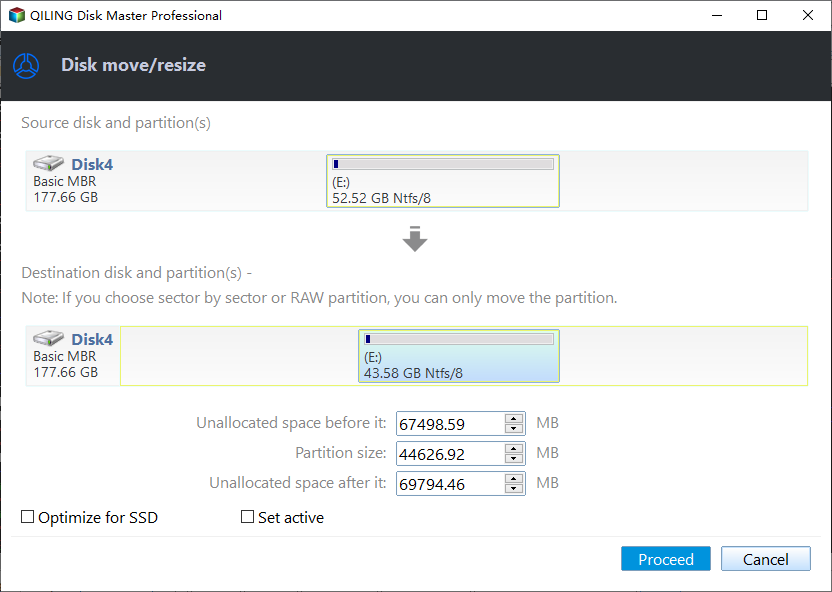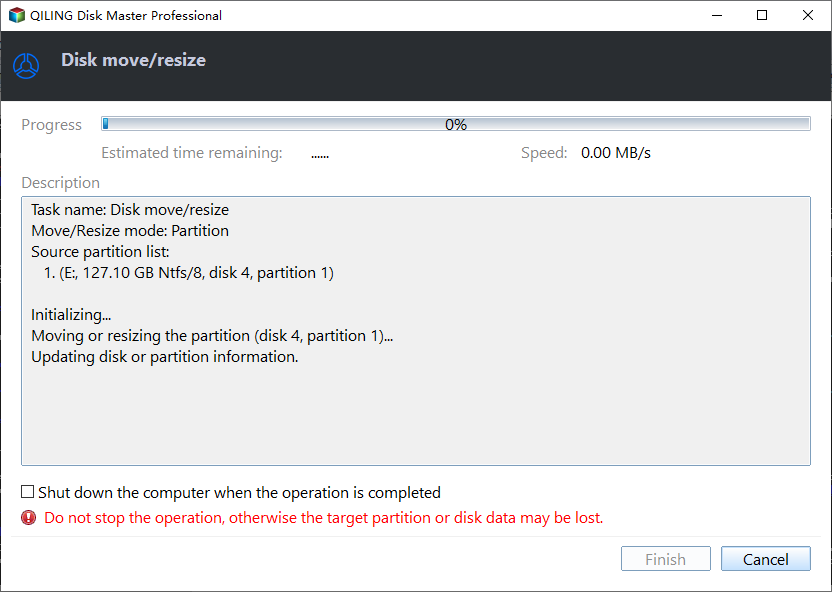How to Speed up Dell (Inspiron) Laptop on Windows 11/10/8/7?
- Scenario: Dell Inspiron 15 3000 running slow
- How to speed up Dell laptop on Windows 11/10/8/7?
- Method 1. Run diagnostics on the hardware components of the system
- Method 2. Change Microsoft system configuration utility
- Method 3. Optimize your drive to help your computer run more efficiently
- Method 4. Increase system partition for speeding up Dell Inspiron
- Method 5. Change Virtual Memory
- Method 6. Run a virus scan and reset system to factory defaults
- Final words
Scenario: Dell Inspiron 15 3000 running slow
I bought the Dell Inspiron 15 3000 series months and months ago. Since day 1 it has been slow. I get so frustrated that I want to throw this laptop over my roof. Finally I wanted some answers to my question, is it just me? I find out, its not just me. What is wrong with my laptop? It may take my 15 hours to download some software, everything freezes, I have to do a hard reboot sometimes. Is there any suggestion for how to speed up Dell Inspiron?
How to speed up Dell laptop on Windows 11/10/8/7?
Many Dell laptop or PC users have met the same questions. The Dell Inspiron 15 3000 Series, Dell i5 3000, and other series, they all may have the problem of running slow. That's why we post this article, for speeding up Dell laptop or PC on Windows 11/10/8/7.
*There are more than one way to speed up Dell Inspiron laptop. You can try those ways in the next content until your problem be solved. Most of the ways also apply to other brands computer like HP, Lenovo, Samsung, etc.
Method 1. Run diagnostics on the hardware components of the system
If you are in the same situation as the scenario said, you should try to run diagnostics on the hardware components of the system. To run diagnostics, you can do as following steps:
1. Restart the system. When the Dell logo shows up, tap the F12 key every two seconds. It will start the One-time boot menu.
2. In the One-time boot menu, using arrow keys to select Diagnostics and hit Enter. This operation will run diagnostics on the hardware components of the system, and it may take around 5 minutes.
If there is any problem, fix it and restart your PC. If there is no problem, try other ways below.
Method 2. Change Microsoft system configuration utility
If there are too many unnecessary programs loading at the very first, it would cause Dell Inspiron slow startup. Thus, you can change the system configuration to speed up your PC.
1. Press Windows key + R key to open the Run dialog.
2. Type msconfig and press Enter.
3. Choose Startup tab and uncheck programs that you feel unnecessarily loading.
4. Click Apply and OK.
It will prompt you to restart, and the changes will take place once you will restart.
Method 3. Optimize your drive to help your computer run more efficiently
Over time, files on your hard drive get fragmented, and your computer slows down because it has to check multiple places on your drive for those pieces. This may be one of the reasons that cause your Dell Inspiron running slow. Thus, if you notice files are taking longer to load, you can see how fragmented the drive is in Windows 11/10/8/7 and decide whether to defrag disk or not. Do as below:
1. Press Windows + R keys simultaneously. In the Run dialog, type dfrgui and pressEnter. Or you can type optimize or defrag in search box to open the disk optimization tool.
2. Select the hard drive and click Analyze to find out if they need to be optimized. (if you have a SSD, this option is grayed out and not available).
3. Check the percentage of fragmented files in the results. If you want to defragment your drive, click Optimize.
*Disk Defragmenter organizes all existing files and settings in the computer, effectively increasing its running speed.
Method 4. Increase system partition for speeding up Dell Inspiron
System drive running out of space will slow down the PC's running speed. Thus, if your PC running slower and slower, and you received a low disk space warning, extending system partition would be an effective way to speed up your PC.
Windows users all know that the Disk Management can help extend partition. To extend C: drive with Disk Management, do as following steps:
1. Right-click the C: drive.
2. Select Extend Volume in the menu, and then, extend the C: drive with the contagious unallocated space behind C: drive.
However, if there is no unallocated space adjacent to the C: drive, the Extend Volume would be grayed out. Thus, here we highly recommend you to use a third-party software, the Qiling Disk Master Professional, which can help you increase C: drive no matter the unallocated space is adjacent to the C: drive or not. It can even increase system partition by allocating free space from other partitions. It has many other features, covering moving apps from one drive to another, migrating OS to SSD, etc.
Step 1. Install Qiling Disk Master to your Dell laptop/PC and launch it. Right-click the D: drive (you can also choose another hard drive that has free disk space), and select Move / Resize.
Step 2. Select C: drive to allocate free space from D: drive to C: drive.
Step 3. When you back to the main interface, you can see that the C: drive has been enlarged. Click Proceed to submit the operation.
Qiling Disk Master also allows you to merge two small partitions into a bigger one. You can even use it to upgrade a small hard drive to a larger one, or you can replace your old HDD with a new SSD without reinstalling OS. They all can help you improve your PC's performance and speed it up.
Method 5. Change Virtual Memory
Virtual memory is used to compensate for the lack of RAM on your computer. Applications use virtual memory to save and load temporary information, effectively increasing your system's performance.
1. Press Windows Key + R key, typeControl Panel, and press Enter.
2. Click System and Security-> System->Advanced System Settings.
3. Select Settings-> Advanced-> Change...
4. Here, select the hard disk whose virtual memory you wish to manage, and then, click "Custom Size". input a desired amount of memory, which is taken from your disk's current space availability.
5. Click OK to save all settings and changes.
Restart your laptop or PC to see whether it is running faster than before.
Method 6. Run a virus scan and reset system to factory defaults
If those methods won't solve your problem, we finally recommend you to run a virus scan on the system, and then, backup the data and reset the system to factory defaults with the recovery partition installed by Dell. If you have backed up system before, you can also restore computer to earlier state with the system image.
Final words
The methods about how to speed up Dell Inspiron we mentioned above may not adjust to every one. But if any method helps you, please let us know. Thanks.
Related Articles
- Best Way to Increase C Drive Space (System Partition) in Windows 7/8/10
Increasing C drive (normally system partition) space without formatting hard drive or reinstalling OS in Windows 10/8/7 is a common problem. Qiling Disk Master provides excellent schemes to extend C partition without data loss in Windows 7/8/10. - How to Partition a Dell Hard Drive without Formatting?
This post illustrates how to partition a Dell hard drive without formatting and losing data. - [5 Ways] How to Speed Up Computer Windows 10 Successfully?
If your Windows 10 computer runs very slow, you can take a look at this post. We gather 6 easy but effective ways to speed up Windows 10 computer. So, read it on and learn how to increase Windows 10, Windows 8 and Windows 7 hard disk speed.



